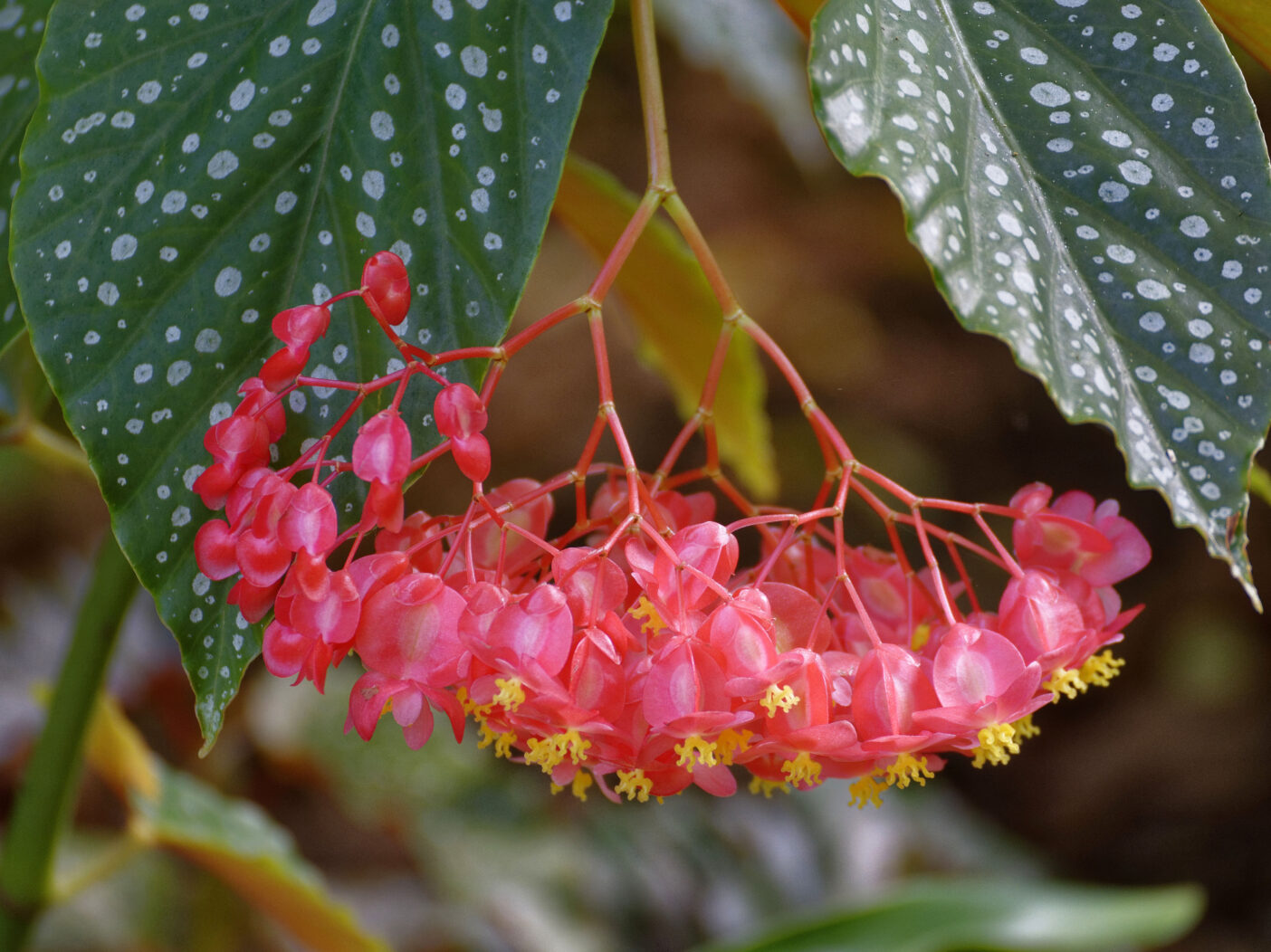
From stems to shrubs to perpetual bloomers, these distinctive plants have won the heart of the Garden’s Curator. Yours might just be next.
Liz Chehayl remembers meeting a begonia collector at a Garden-hosted class years ago. At that time, she knew begonias only as the wax varieties commonly planted in garden beds. “I thought, ‘How could you be a collector of those?’” Chehayl recalls. “Then I learned all about them.
Now, she’s a bona fide “begoniac” and hoping Garden guests will grow to love this wide-ranging plant family, too. Chehayl, the Brian Holley Curator of Collections, is working to expand the Garden’s begonia collection through a partnership with Fort Worth Botanic Garden. The Texas garden holds a nationally accredited begonia collection, which it wants to back up by sharing the plants with other botanical institutions.
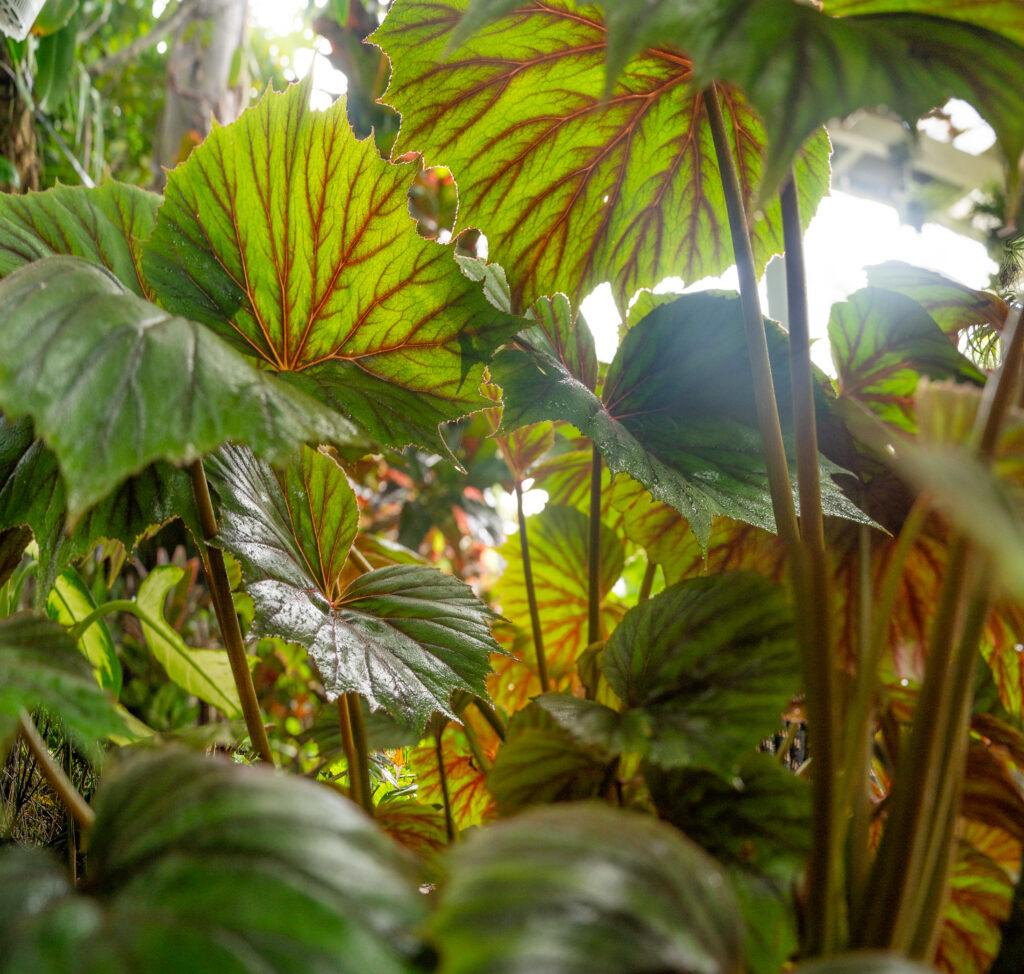
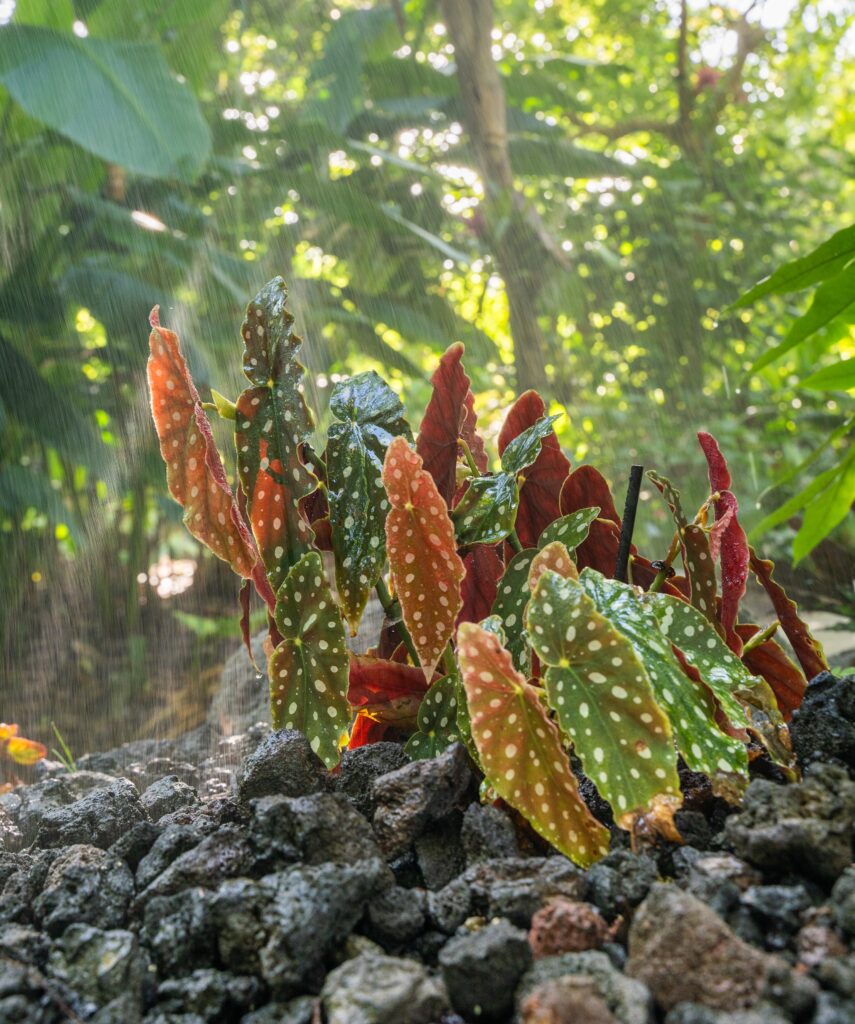
We currently have about 60 begonia species in our collection; Chehayl hopes to grow that to more than 100.
“At least for me, their primary appeal isn’t their flowers. It’s their foliage,” Chehayl says. “They can look very different from one another, yet they’re very distinctive. You know it’s a begonia.”
The begonia family is wide ranging, with more than 2,000 species and 10,000 cultivars. They range in height from a few inches to 12 feet. The foliage that appeals to Chehayl can be satiny smooth or textured, as if embossed. Veins are a prominent feature for many begonia types. The leaf coloration and patterning seem limitless— green, pink, red, white, purple, silver, and black, appearing as polka dots, stripes, swirls, outlines, or simple monotones.
Most begonias are tropical, making South Florida an ideal place to showcase them. In fact, we’ve recently redesigned a portion of the Kapnick Brazilian Garden along the “S” curve to feature begonias with other tropical favorites such as bromeliads and peperomias.
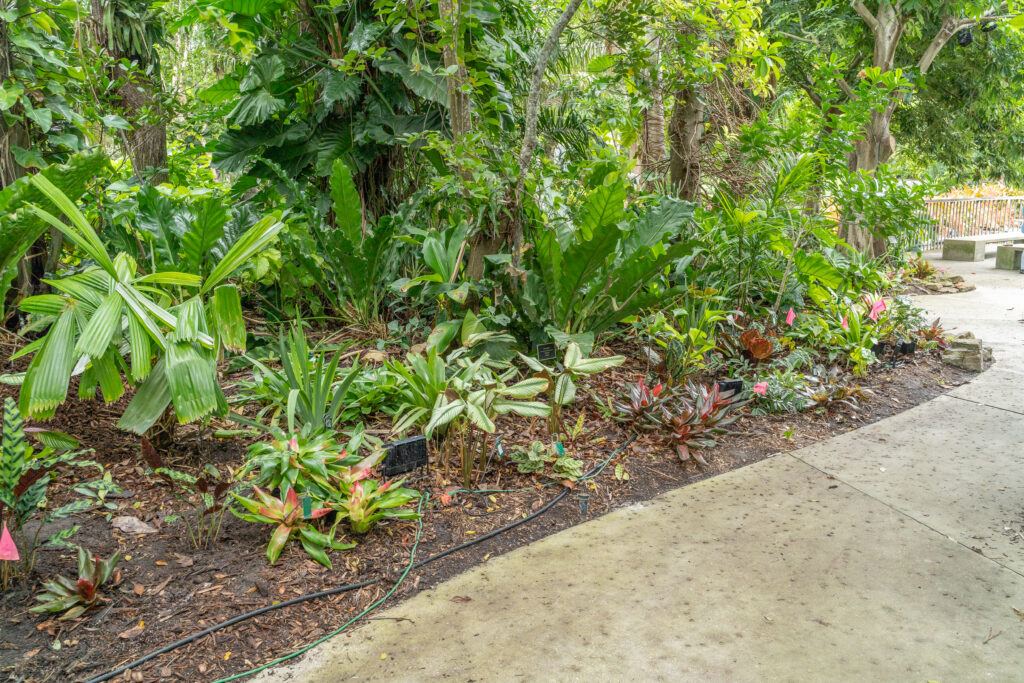
Chehayl is focused on amassing more begonias from Brazil, Asia, and the Caribbean to complement our cultivated gardens. She’s also seeking species favored by the late Brazilian landscape architect Roberto Burle Marx, whose work inspired the Brazilian Garden design.
In the future, Chehayl hopes to expand the collection to include more begonias in need of protection. The International Union for Conservation of Nature lists more than 90 begonia species on its “Red List” of at-risk plants. Of those, 40 are considered Endangered or Critically Endangered. Botanical gardens play a key role in conserving such disappearing species by sharing, growing, and tending them. Our Garden currently has 5,500 plants on the IUCN Red List, about 1,200 of which are on display.
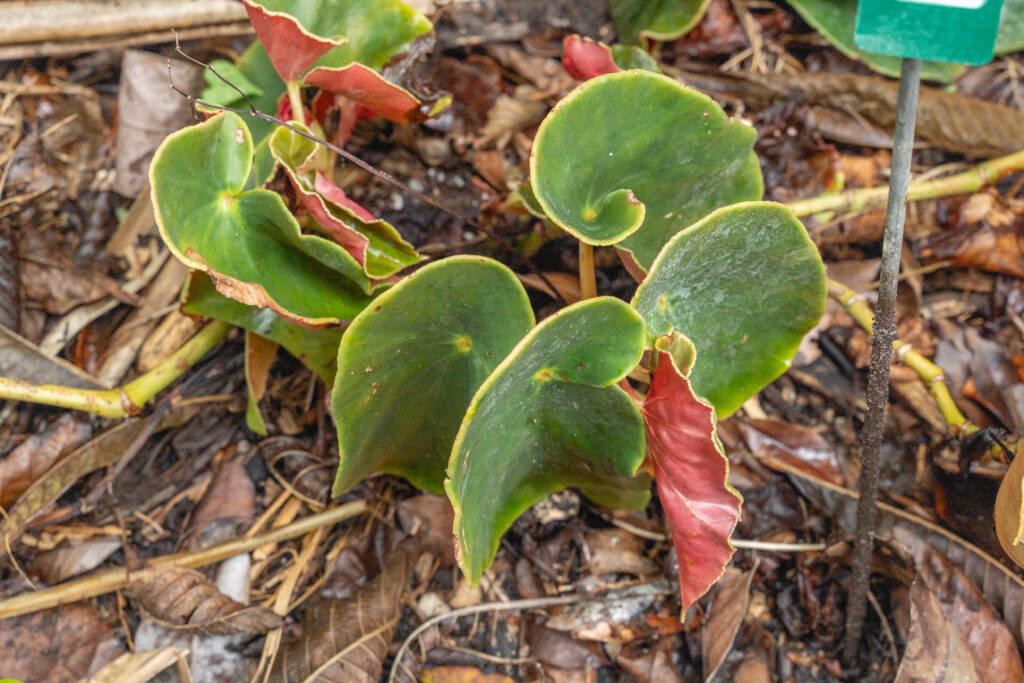
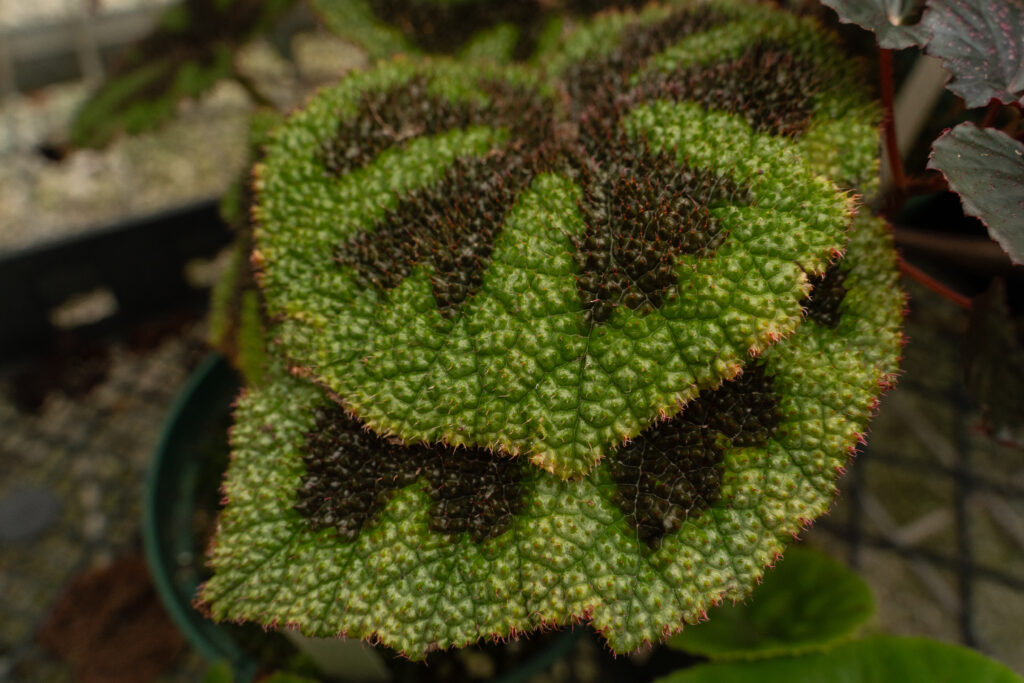
Begonias carry a bit of mystique, which adds to their allure. The American Begonia Society lists more than 700 begonia as “unidentified.” These are labeled with a number until their species or cultivar is determined or a taxonomist concludes they are a new species.
Such was the case with one of Chehayl’s favorites, a vigorous plant known simply as U402. She’s had it since the early 2000s. A botany professor in Pennsylvania recently confirmed its identity, declaring it a dark-leafed variant of Begonia ulmifolia, a Brazilian species that produces small white flowers.
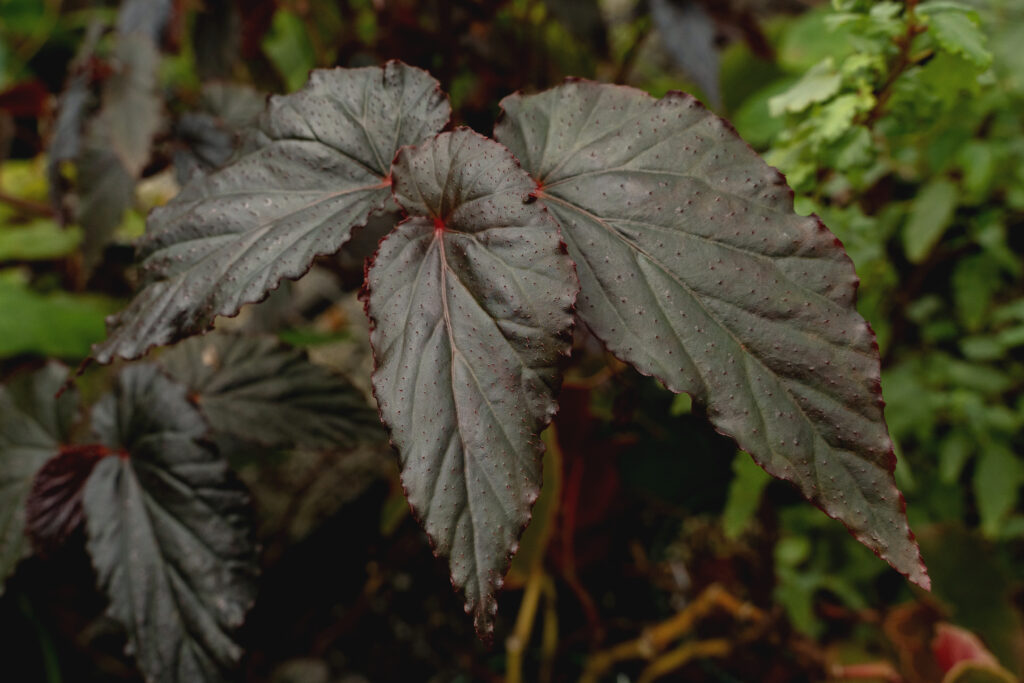
Common Types of Begonia
Rhizomatous
These begonias are known for their colorful, patterned leaves and copious blooms that can cover the entire plant. Subcategories include the popular “Rex cultorum,” hybrids derived from India’s Begonia rex, or “king begonia,” and “upright jointed” rhizomatous begonia. These grow upright instead of hugging the ground.
Cane
These easy-to-grow begonias include 81 species, dubbed “cane-like” for their stems. They include the ever-popular “angel wing” varieties, named for their leaf shape. Cane begonias are widely hybridized, with some 2,000 cultivars. In 1926, a hybridizer crossed Begonia aconitifolia with Begonia ‘Lucerna,’ an heirloom cultivar first created in the 1890s. The cross yielded the first of what are now known as “superba” hybrids.
Shrub
These begonias are called “shrubs” because of the way in which they grow, producing multiple shoots to make a full plant. Shrub begonias can be quite tiny, but they can also reach 12 feet tall and produce 24-inch leaves. Most have white flowers, though pink and red ones are not uncommon.
Semperflorens
If you remember high school Latin, you may have figured out that these begonias are “always blooming.” Semperflorens are the wax begonias commonly used in garden beds and known for their thick, waxy leaves.
Tuberous
Widely hybridized tuberous begonias are best known for their flowers, which appear in a multitude of colors and sizes. The pendula types produce long, trailing stems and are popular as hanging baskets. Southwest Florida’s climate is too hot to grow these outdoors, but you might try them in an air-conditioned space.
Source: American Begonia Society
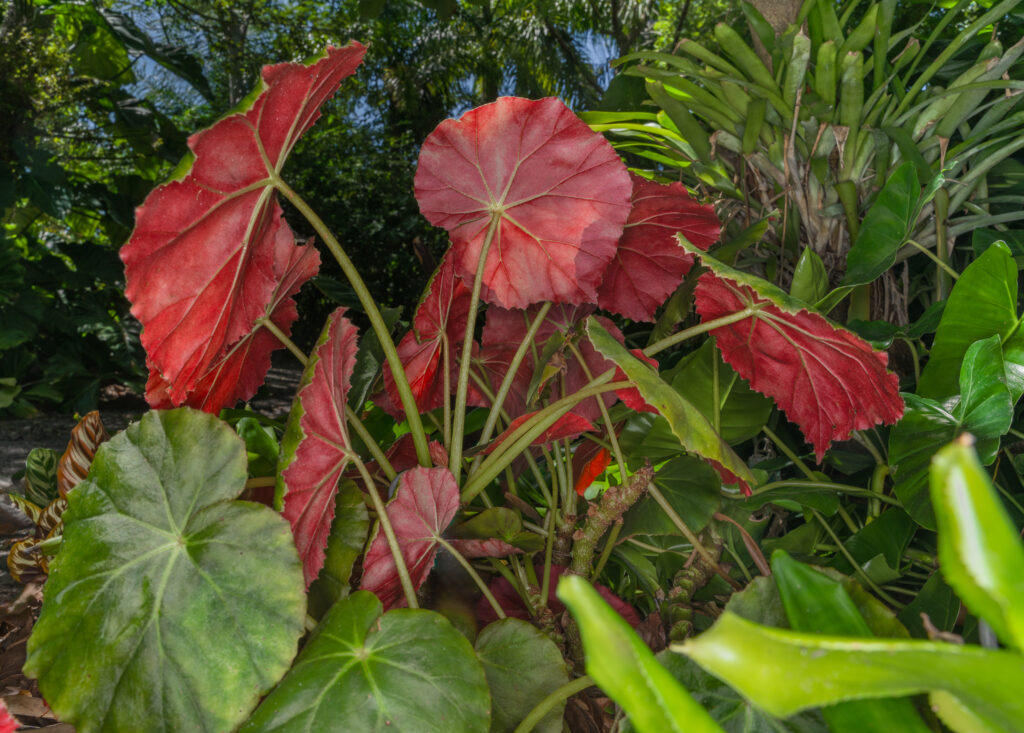
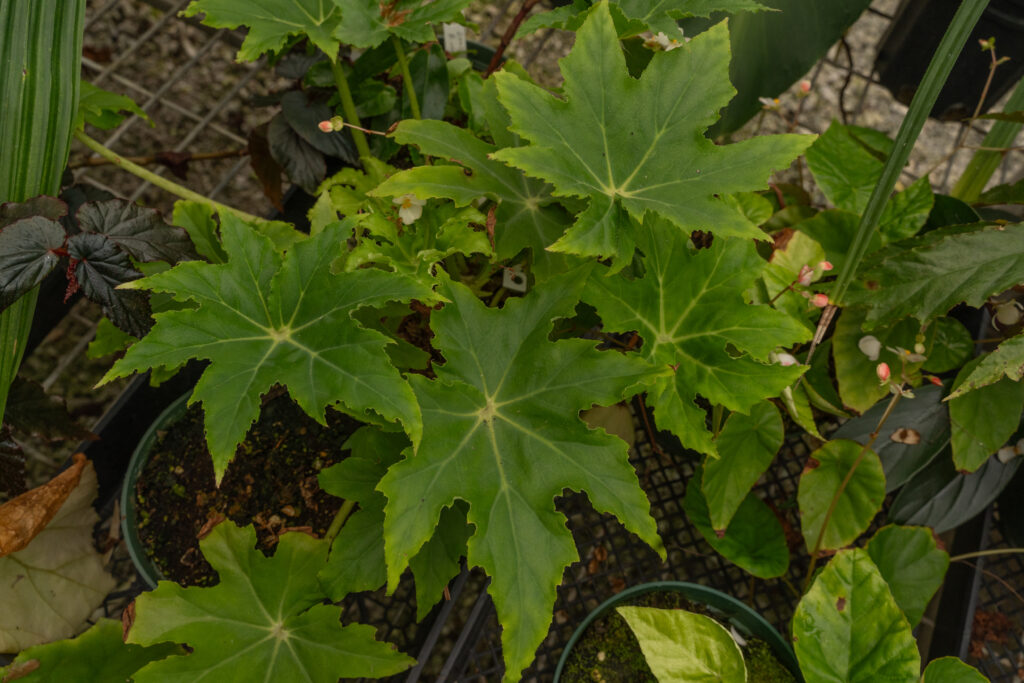
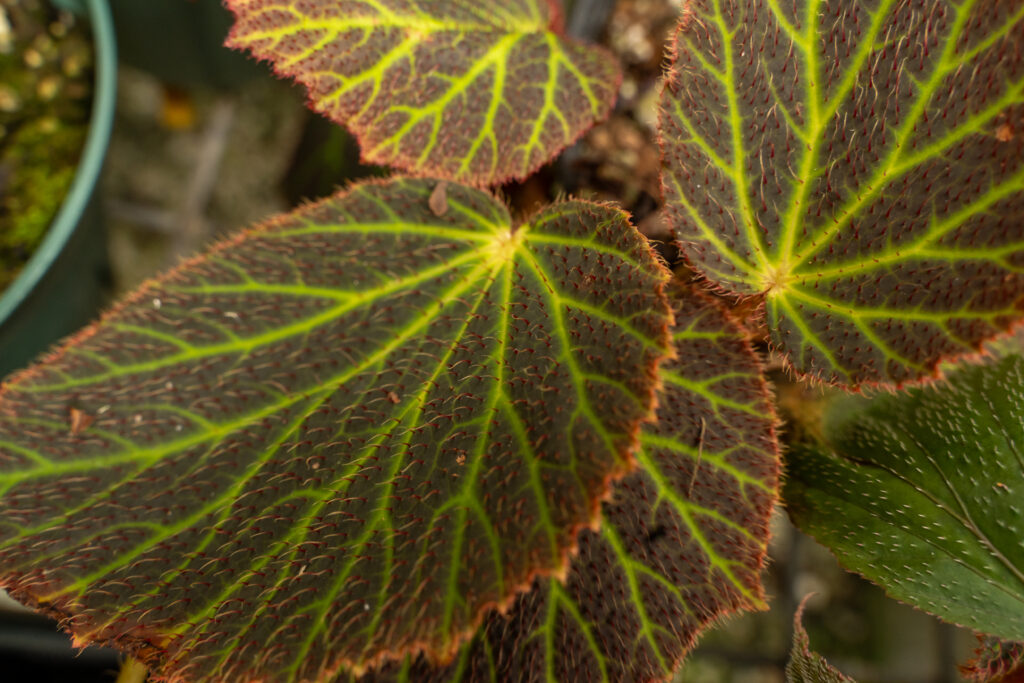
This article originally appeared in the Fall 2024 issue of Cultivate, the Garden’s magazine.


